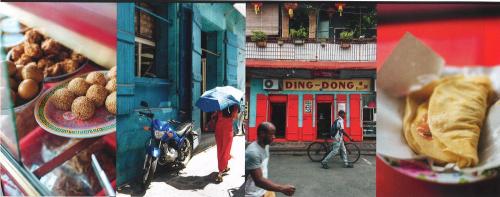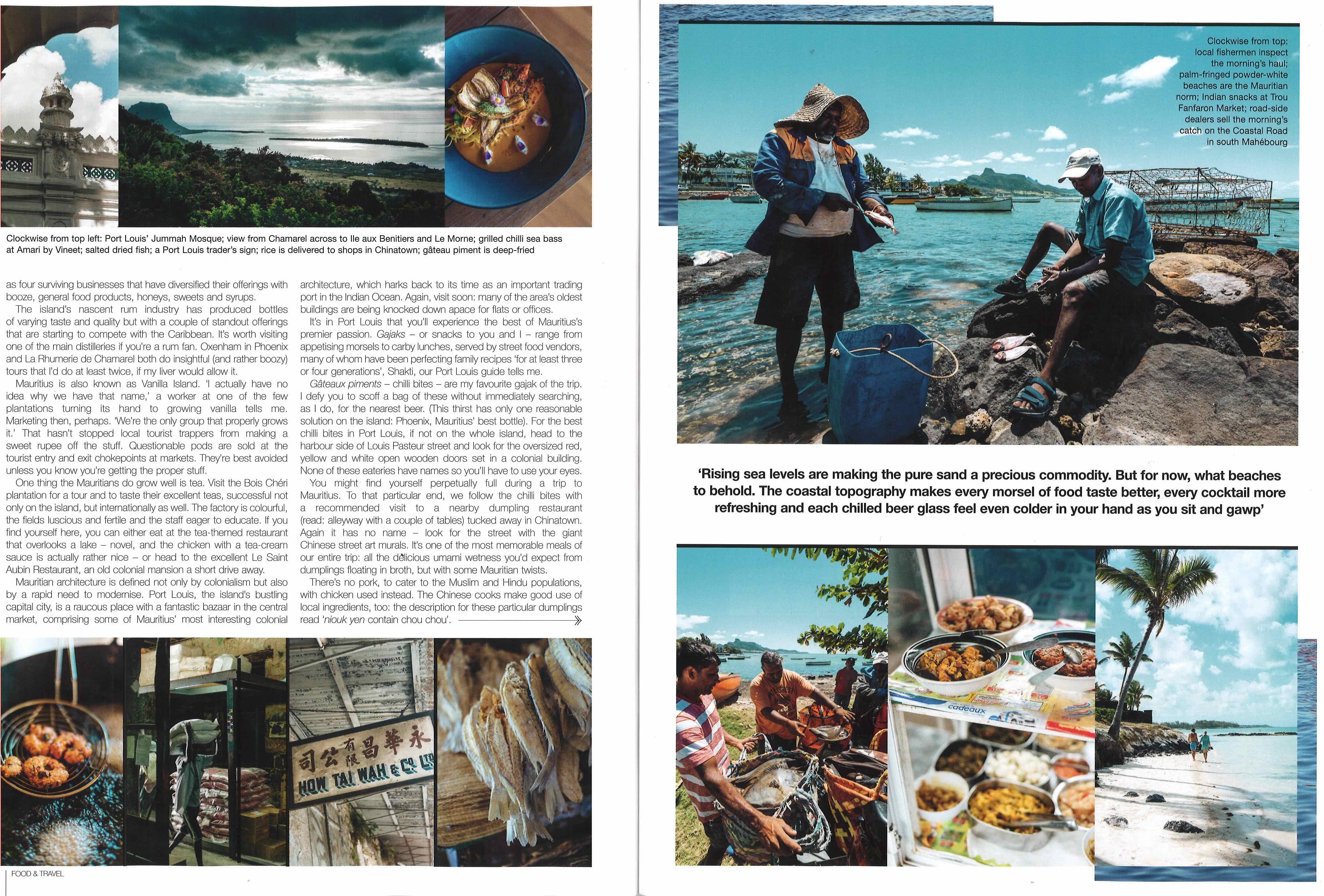
Delicious Mauritius
Extracts from an article written by Alex Harris in Food and Travel Magazine
Mauritian architecture is defined not only by colonialism but also by a rapid need to modernise. Port Louis, the island’s bustling capital city, is a raucous place with a fantastic bazaar in the central market, comprising some of Mauritius’ most interesting colonial architecture, which harks back to its time as an important trading port in the Indian Ocean. Again, visit soon: many of the area’s oldest buildings are being knocked down apace for flats or offices.
It’s in Port Louis that you’ll experience the best of Mauritius’s premier passion. Gajaks – or snacks to you and I – range from appetising morsels to carby lunches, served by street food vendors, many of whom have been perfecting family recipes ‘for at least three or four generations’, Shakti, our Port Louis guide tells me.
Gâteaux piments – chilli bites – are my favourite gajak of the trip. I defy you to scoff a bag of these without immediately searching, as I do, for the nearest beer. (This thirst has only one reasonable solution on the island: Phoenix, Mauritius’ best bottle). For the best chilli bites in Port Louis, if not on the whole island, head to the harbour side of Louis Pasteur street and look for the oversized red, yellow and white open wooden doors set in a colonial building. None of these eateries have names so you’ll have to use your eyes.
You might find yourself perpetually full during a trip to Mauritius. To that particular end, we follow the chilli bites with a recommended visit to a nearby dumpling restaurant (read: alleyway with a couple of tables) tucked away in Chinatown. Again it has no name – look for the street with the giant Chinese street art murals. It’s one of the most memorable meals of our entire trip: all the delicious umami wetness you’d expect from dumplings floating in broth, but with some Mauritian twists.
There’s no pork, to cater to the Muslim and Hindu populations, with chicken used instead. The Chinese cooks make good use of local ingredients, too: the description for these particular dumplings read ‘niouk yen contain chou chou’.
‘This has been adapted to local tastes,’ says Shakti. ‘So around the island you might have someone of Indian origin preparing Chinese cuisine to sell to other Mauritians of African descent. What was once Chinese is now for everybody.’
There’s a lot to be seen and eaten in Port Louis. The likes of samosas, biryani, kebab (often served in a French baguette) and farata bread (their roti, which comes with pickles and chutneys and curries) are best sought out from food trucks in Trou Fanfaron, near the main bus station. But for fancier fare, you need to look to the luxury side of Mauritius.
To read more, please click on the article recommending my Moris' history and street food tour







